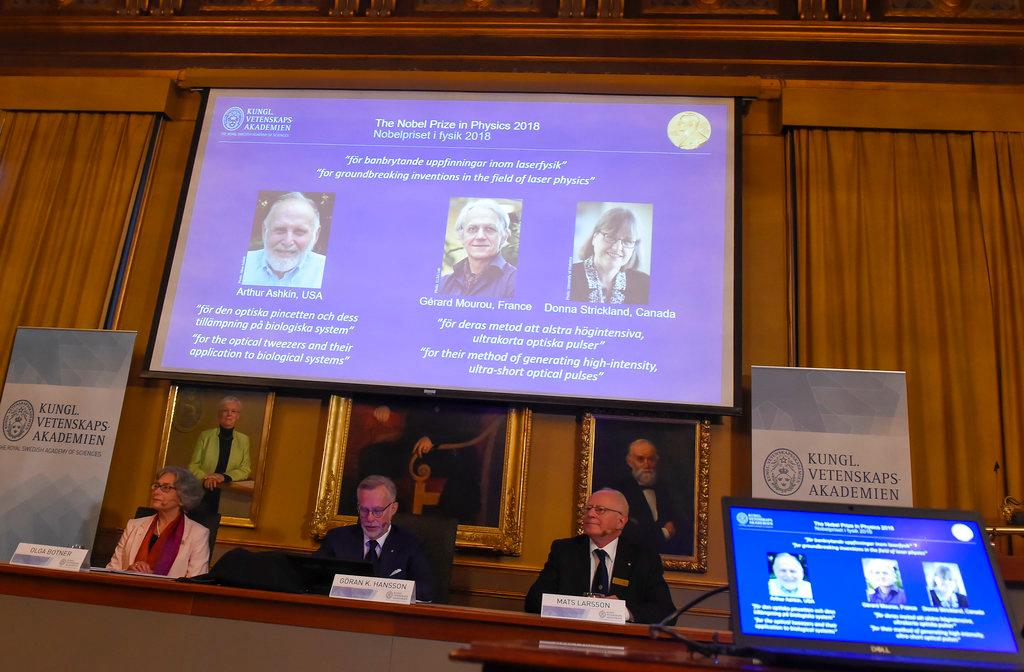STOCKHOLM—Three scientists from the United States, Canada, and France won the Nobel Prize in physics on Oct. 2, for work with lasers described as revolutionary and bringing science fiction into reality.
The American, Arthur Ashkin of Bell Laboratories in New Jersey, entered the record books of the Nobel Prizes by becoming the oldest laureate at age 96. Donna Strickland, of the University of Waterloo in Canada, became the first woman to win a Nobel in three years and is only the third to have won the prize for physics.





